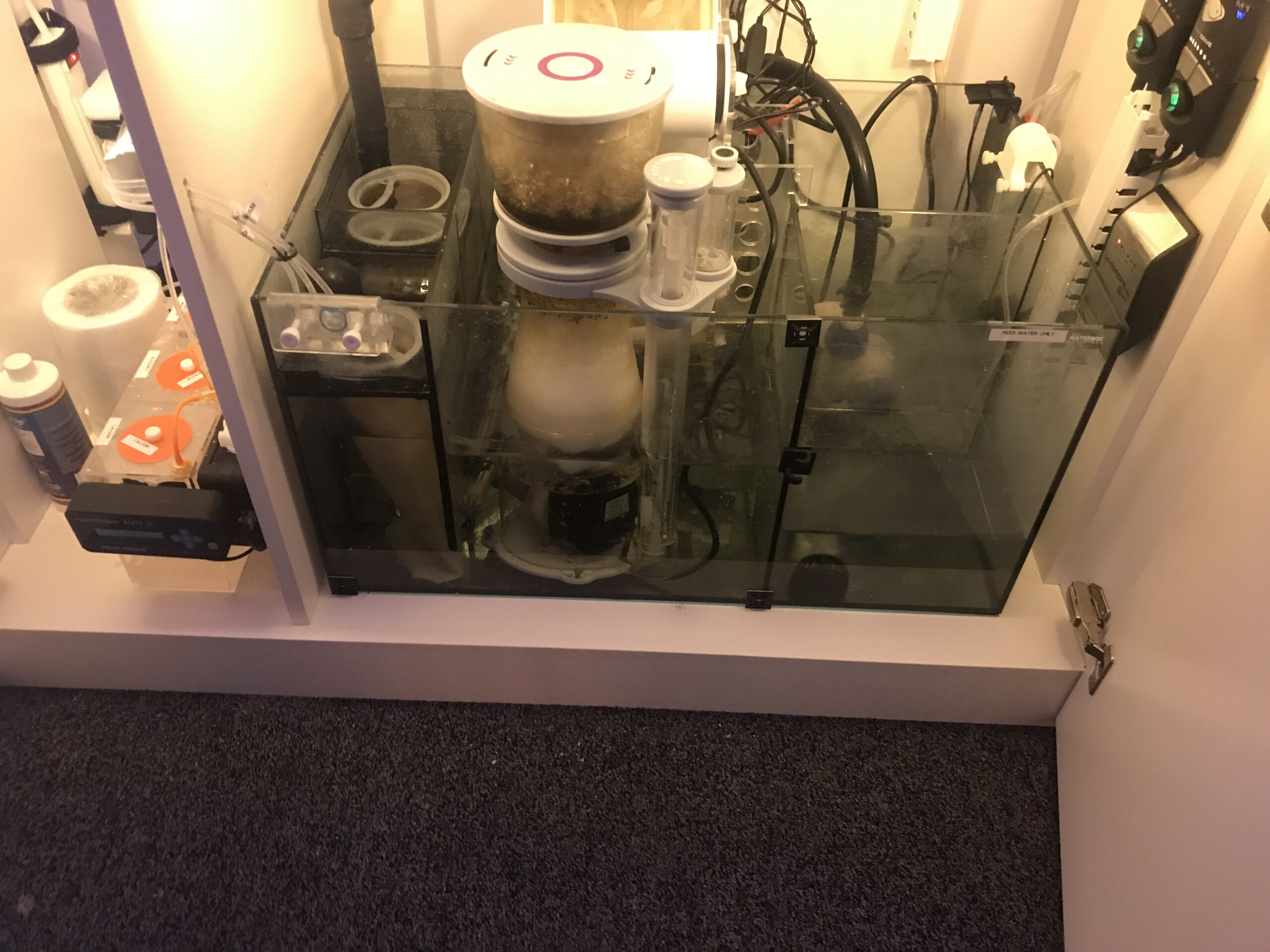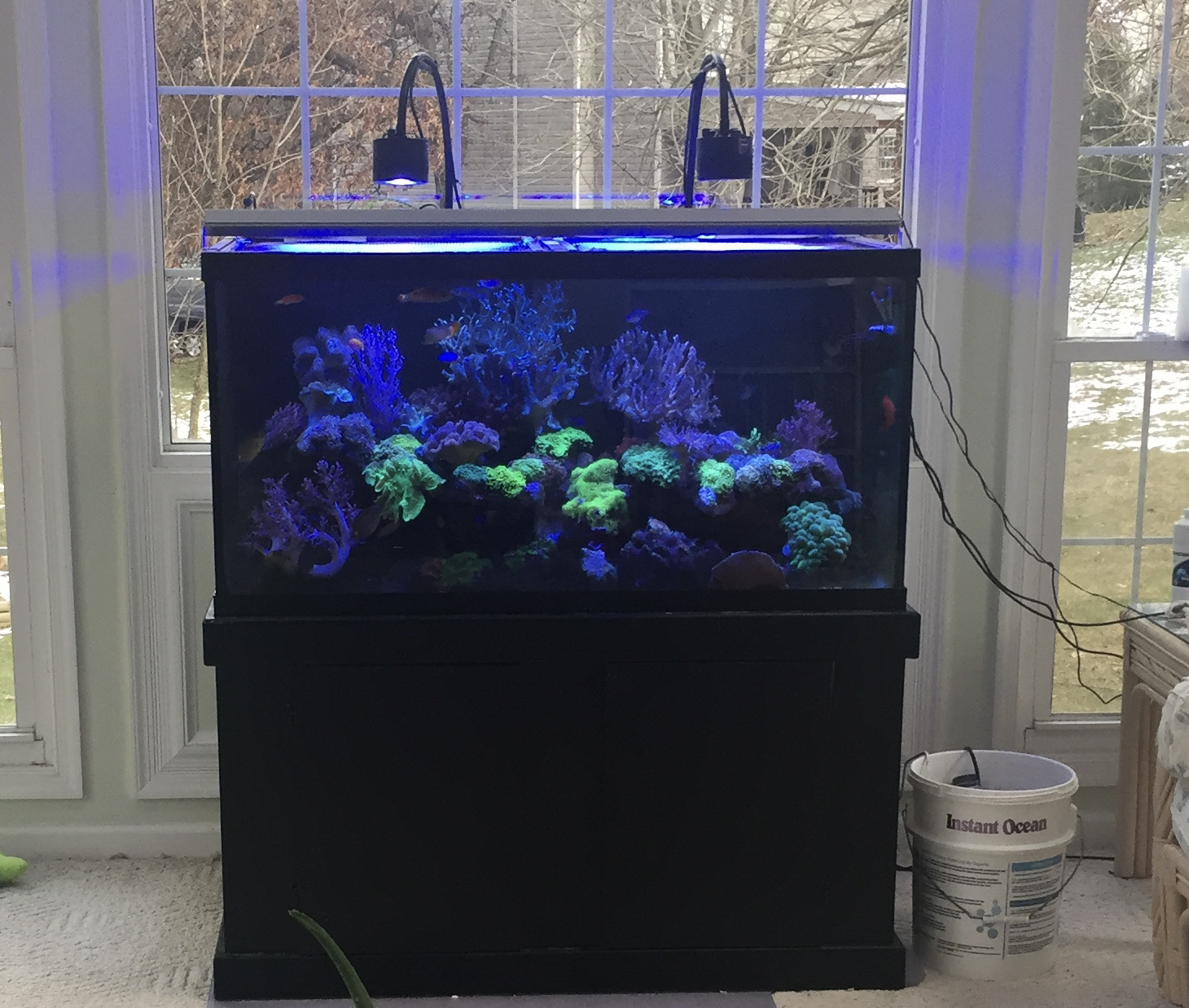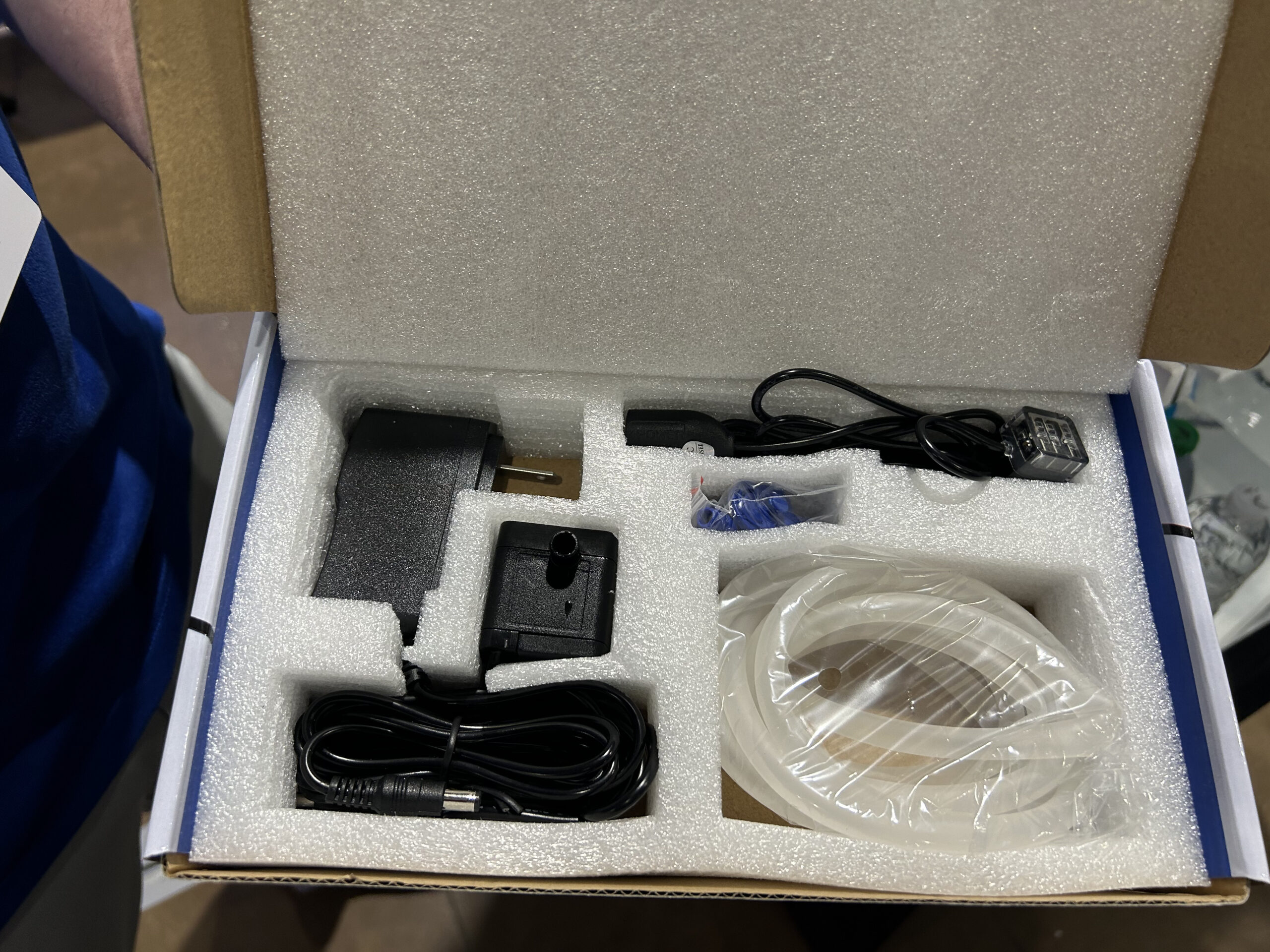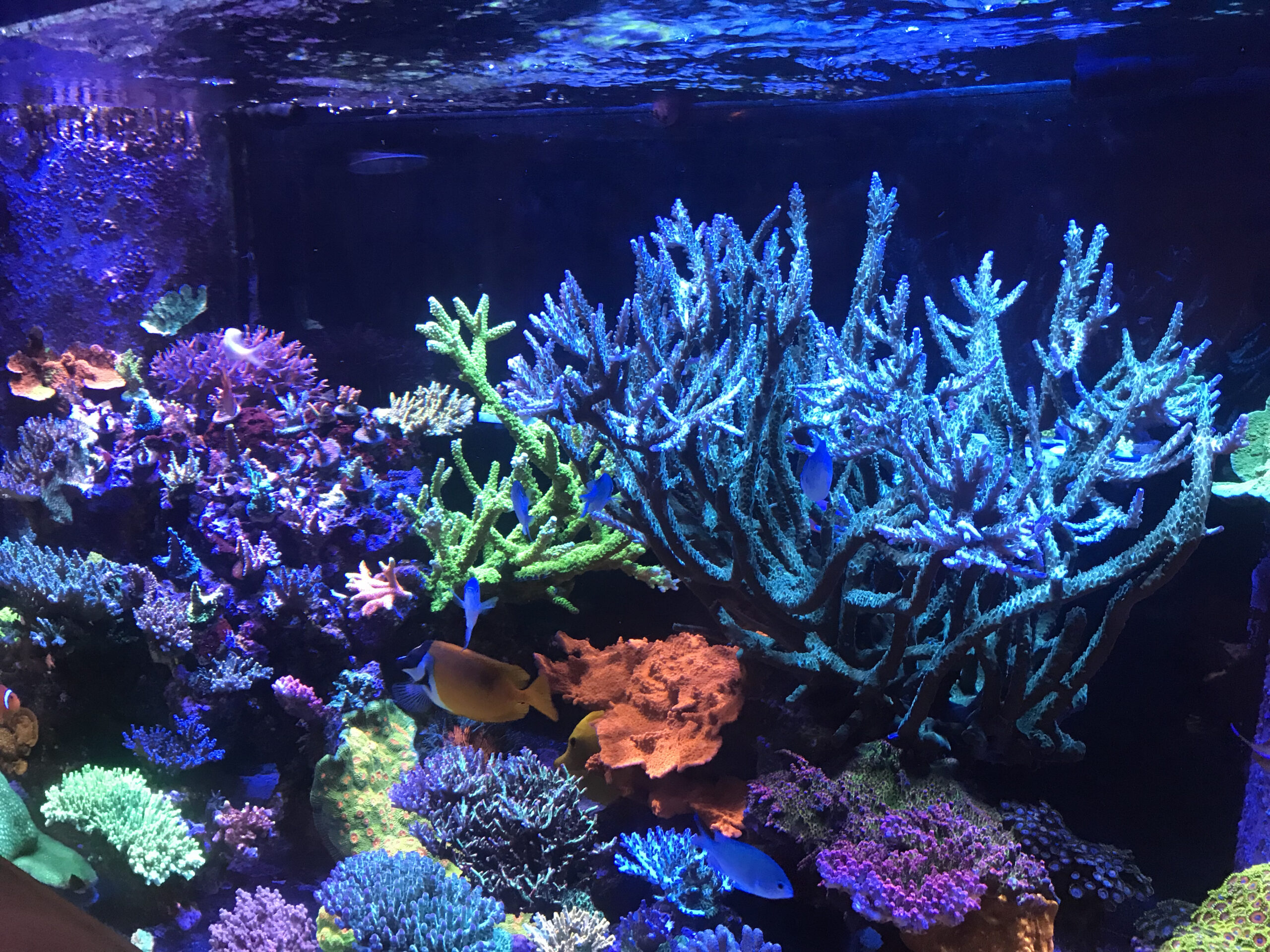One of the crucial aspects of having a successful reef tank is having the tank be as stable as possible and this is especially true in terms of salinity. But when setting up a new system, one of the aspects that are often forgotten or that may be an afterthought is that all tanks lose water through evaporation and that this evaporated water needs to be replaced. In the best-case scenario, this replacement should be done often in small increments so that the stability of the water in terms of salinity is maintained.
In the early days of the hobby, many of us would simply wait until the amount evaporated reached a certain point and then we would simply dump in a bucket of freshwater to bring the water level back to the desired level. So, the salinity in the tank would go from being too high, as the water evaporated is free of salt, and then back to the desired level. No wonder it was so much more difficult to keep corals alive back then.
Fortunately, we have learned how important stability is, and as a result, there is now the technology available to replenish evaporated water when even only small amounts are lost. This technology is the automatic top-off system or ATO for short. In this system, a mechanism of some sort, either a float switch or an optical sensor detects when the water level has dropped by a certain amount and then it either turns on a small pump that adds freshwater to the tank or turns on a solenoid which allows freshwater water to flow into the tank and adds it to the desired level. This may sound simple, and it is, but there are some small nuances that can make life easier or more difficult for the user.

How to avoid floods
When deciding on how to set up an ATO and which one to get, the first thing that needs to be considered, in my opinion, is how likely is it to flood the house should it fail. Having done this for a long time and having flooded several portions of the house, it is my experience that nothing upsets your significant other as much as flooding the house. Flooding your fish room is one thing, but when you flood a new floor/carpet, there is a price to pay. So, while most ATOs operate in a similar manner there are some differences as well as ways to reduce the likelihood of floods. Just so there is clarity as to what I mean by a flood, I once forgot to shut off a valve while filling a tank and put over 50 gallons of water on a new floor and carpet. Luckily it was freshwater, but nevertheless, I am still reminded of the faux pas now over five years later.
I have found that the best way to reduce the likelihood of an extra water mishap is to have as much redundancy as possible in the system. That is, each part of the ATO refill system needs to have at least two things to fail, in order for a flood to occur. The first part of this system is that each ATO refill system includes a reservoir. This reservoir is simply an extra tank or chamber to hold the freshwater before it is pumped into the tank as replacement water. The key attributes of this reservoir will be discussed below. So instead of the water flowing directly from the RO/DI unit into the tank, instead it flows into the reservoir where it is stored.

The ATO pump is placed in the reservoir and water from the reservoir is pumped into the sump of the tank to the desired level when it is triggered to pump by the ATO unit. Again, it sounds simple, and it is, but with some caveats. The first caveat to consider is how small an increment of water loss does there need to be before the pump is triggered. With smaller tanks, it may be preferable to have it trigger after only a small amount of water has evaporated or been removed from the tank. This is because in smaller tanks having it trigger after small amounts of evaporation will help to keep the salinity stable.
In larger tanks, it’s slightly different in that the pump only needs to kick in after a fairly substantial amount of water has evaporated, but which is not a large percentage of the tank’s actual volume, because if it kicks in after only a small volume of water has evaporated then it will be turning on and off frequently and this will reduce the lifespan of the pump. After an ATO with the proper volume replacement function is chosen, whether it is by float switch or optical sensor only one should be chosen that includes a redundancy trigger, so that it does not stay on and add extra water after a certain level is passed. This redundancy trigger is either an extra float switch or a level sensor mounted above the lower switch which is triggered if the water level surpasses the first switch and triggers this switch. This is another mechanism for preventing the ATO from overfilling the tank.

This high-water trigger can also include an alarm that will sound should the tank be overfilled. This alarm further adds to reducing the likelihood of having a flood. There are also now ATO units that have internal timers that only allow the pump to run for a certain period of time before shutting off. This prevents the pump from running long after it has pumped water to the desired level and is another mechanism for preventing a flood. And if even all of this is not felt to not be enough, then a float valve can also be mounted in the sump so that if the water reaches a certain level the float moves up and shuts off the flow to the tank mechanically.
All of this may seem excessive, but preventing a carpet from being flooded with saltwater makes it worth it. While dumping excess water into a sump/tank is a concern so too is having the pump in the reservoir run dry. To prevent this from happening an ATO unit should be chosen that either has a pump with an automatic shut-off should the pump run dry, or a level alarm that triggers when the water level in the reservoir is too low for the pump to work properly. A system with one or the other should be chosen as they will both help to preserve the fill pump and will add to a unit’s cost, it is usually a less expensive add-on than having to replace a burned-out pump. As mentioned above it is usually desirable to have an ATO refill a tank from a reservoir rather than fill it directly from the RO/DI unit and this is for several reasons.

First, the water coming from the RO/DI unit is usually cold as the unit is connected to the cold-water line, and dumping water 10 or 20 degrees cooler than the tank’s water is not a good idea. In addition, this water is under pressure as it comes out of the RO/DI unit and so if a shut-off fails it can either overfill the tank with freshwater or overfill the tank or both. For these reasons a reservoir in between the RO/DI unit and the tank is beneficial.
The reservoir can be just about any container that can hold clean water and keep it clean. I have used old aquariums, old salt buckets, and even new clean garbage cans all with success. The best choices are containers that can be closed so that dust and dirt do not get into the water. They should also be able to be kept relatively dark so that algae does not start to gain a foothold. I have found that the best reservoirs hold 4-5 times the average volume of water that evaporates daily. In that way, they do not need to be refilled daily and the water has enough volume and time to come up to temperature so when water from them is added to the tank there is no temperature shock.

However, I should note that as part of the entire ATO system, reservoirs also have the capacity to flood should they not be designed and controlled properly. In this regard, I use a solenoid on a level sensor as well as a float valve on the water line coming from the RO/DI unit so that when the water coming from that unit reaches the desired level in the reservoir it shut off long before any chance of overflowing can occur.
One last aspect of an ATO that should be addressed is that it should be easy to turn off when a water change is being done. If it is not shut off, it will pump fresh water into the tank while the change is occurring and this can lower the salinity of the tank significantly. My ATOs are all now on marked switches so that when a water change is occurring, they can be switched off for the duration and then easily switched back on once the water change is complete. Having it on a switch rather than having to unplug and plug it in is much easier and puts less stress on the plug and cord of the unit.




